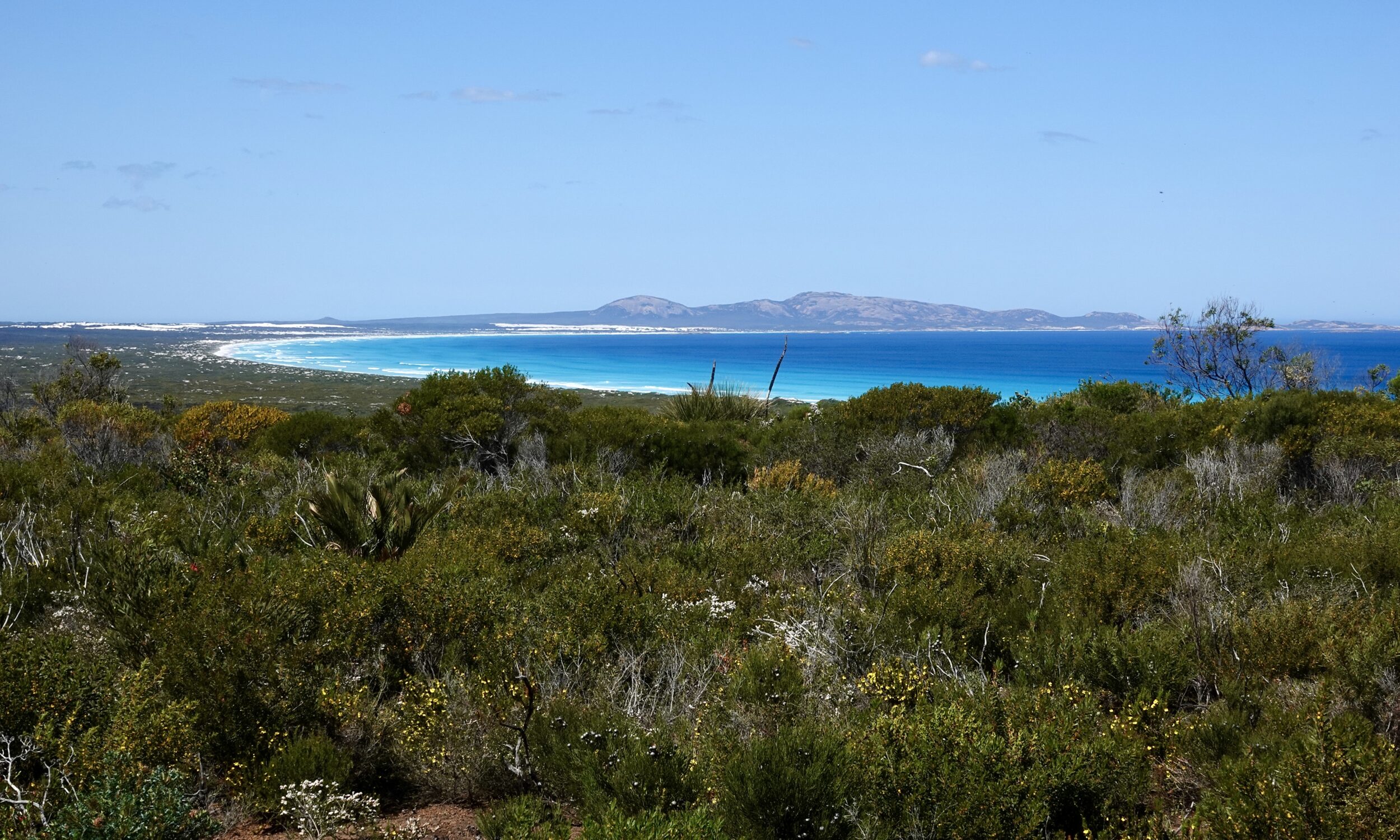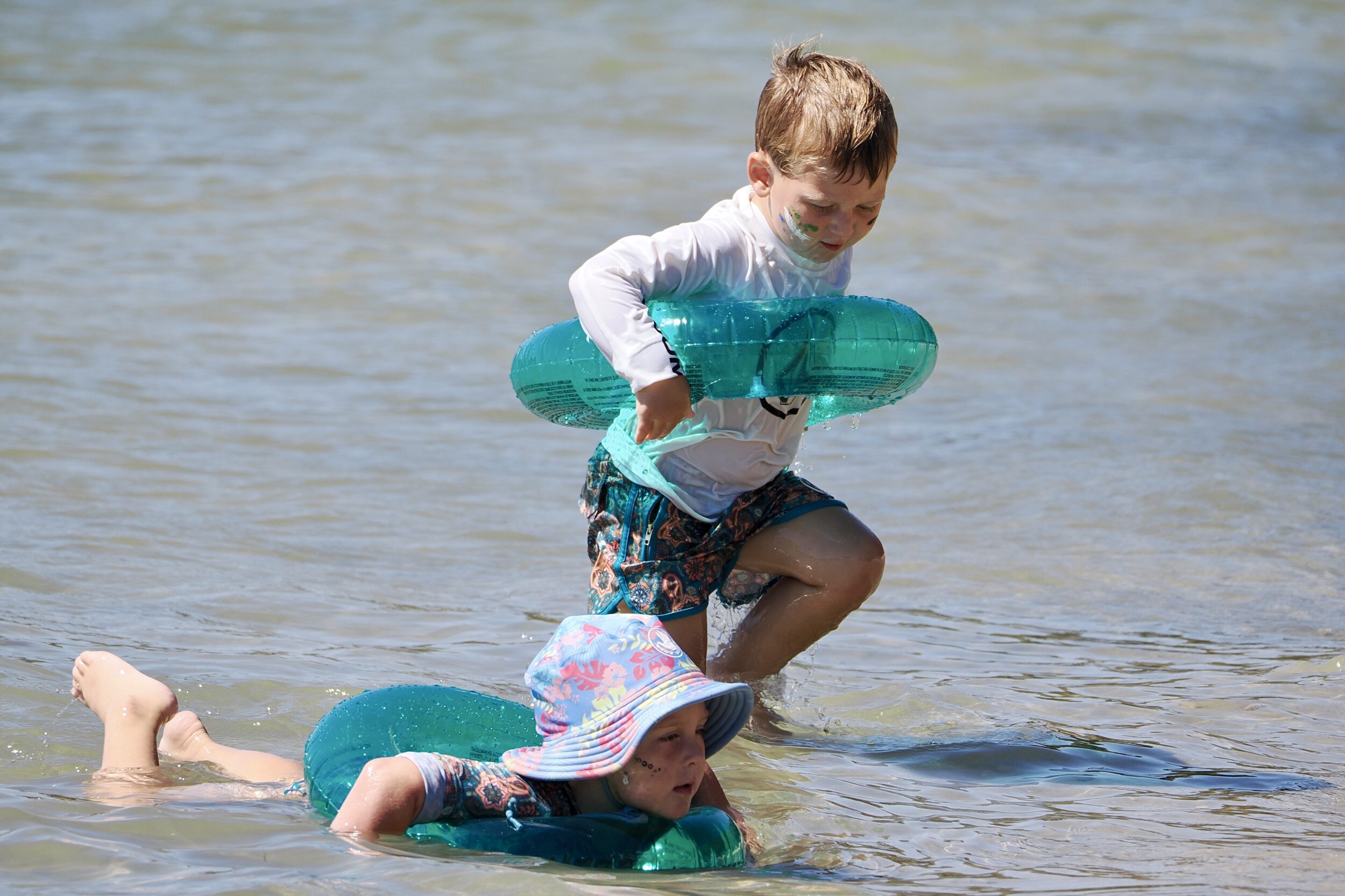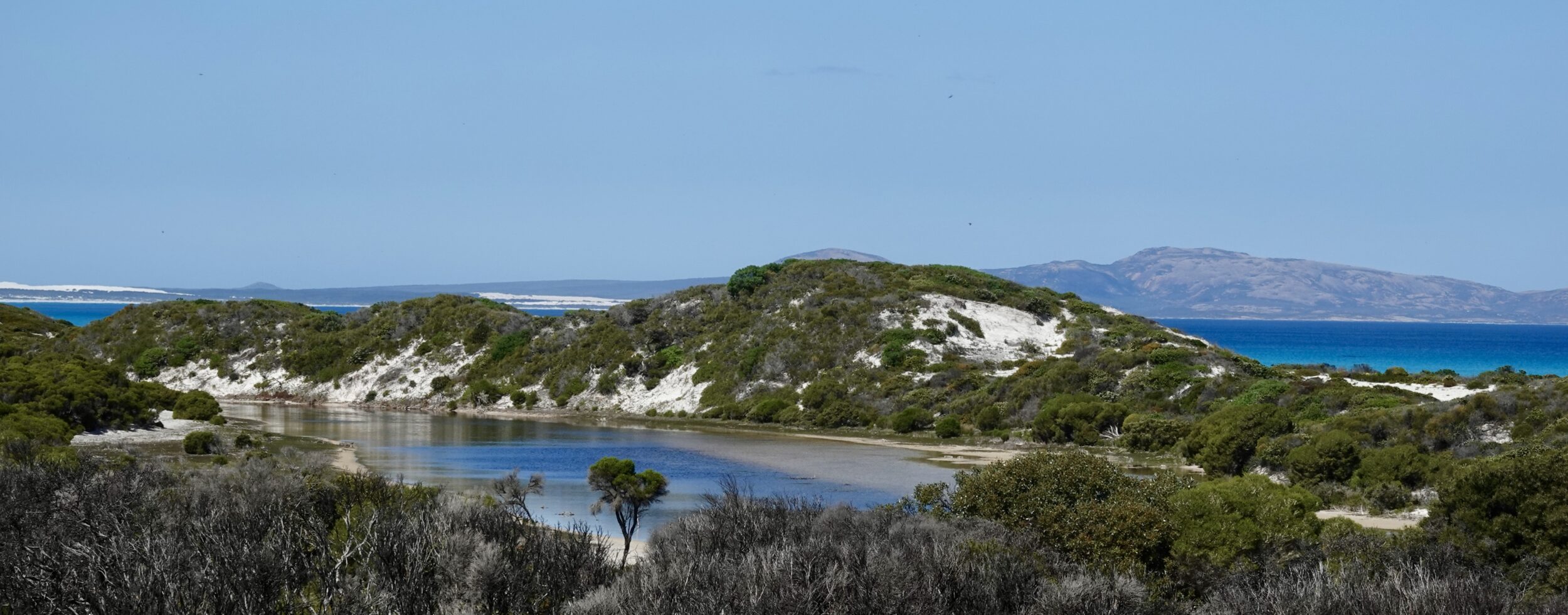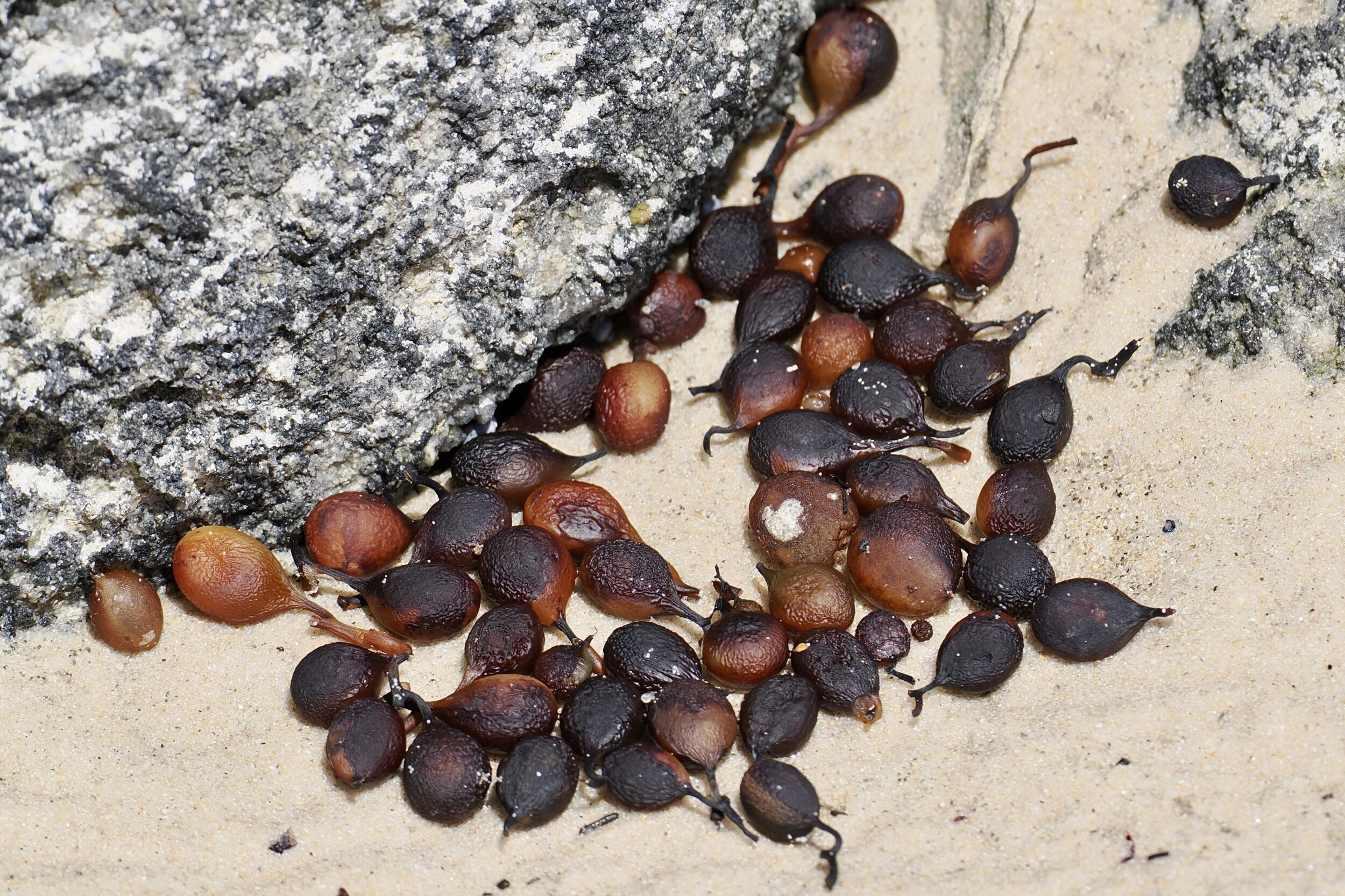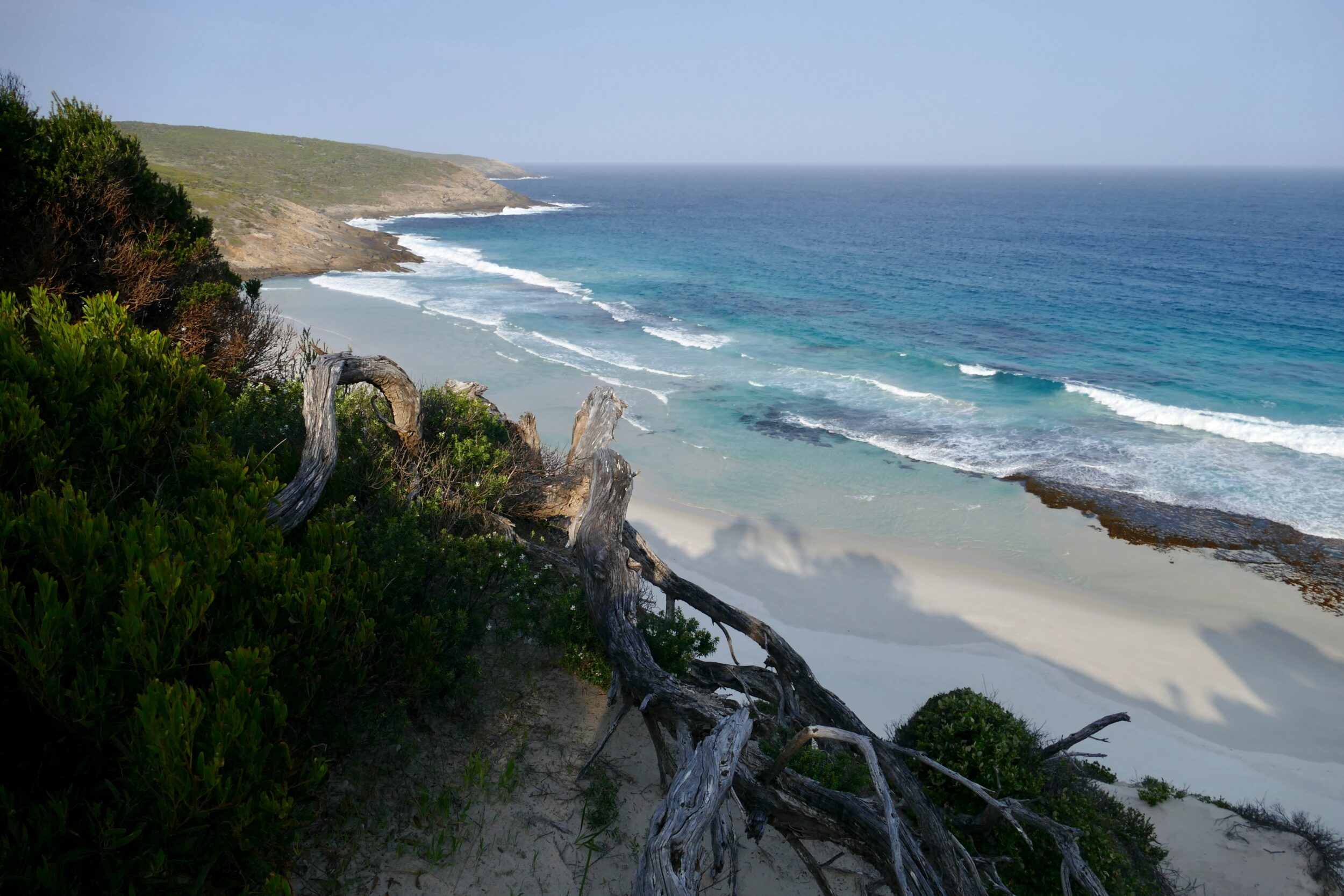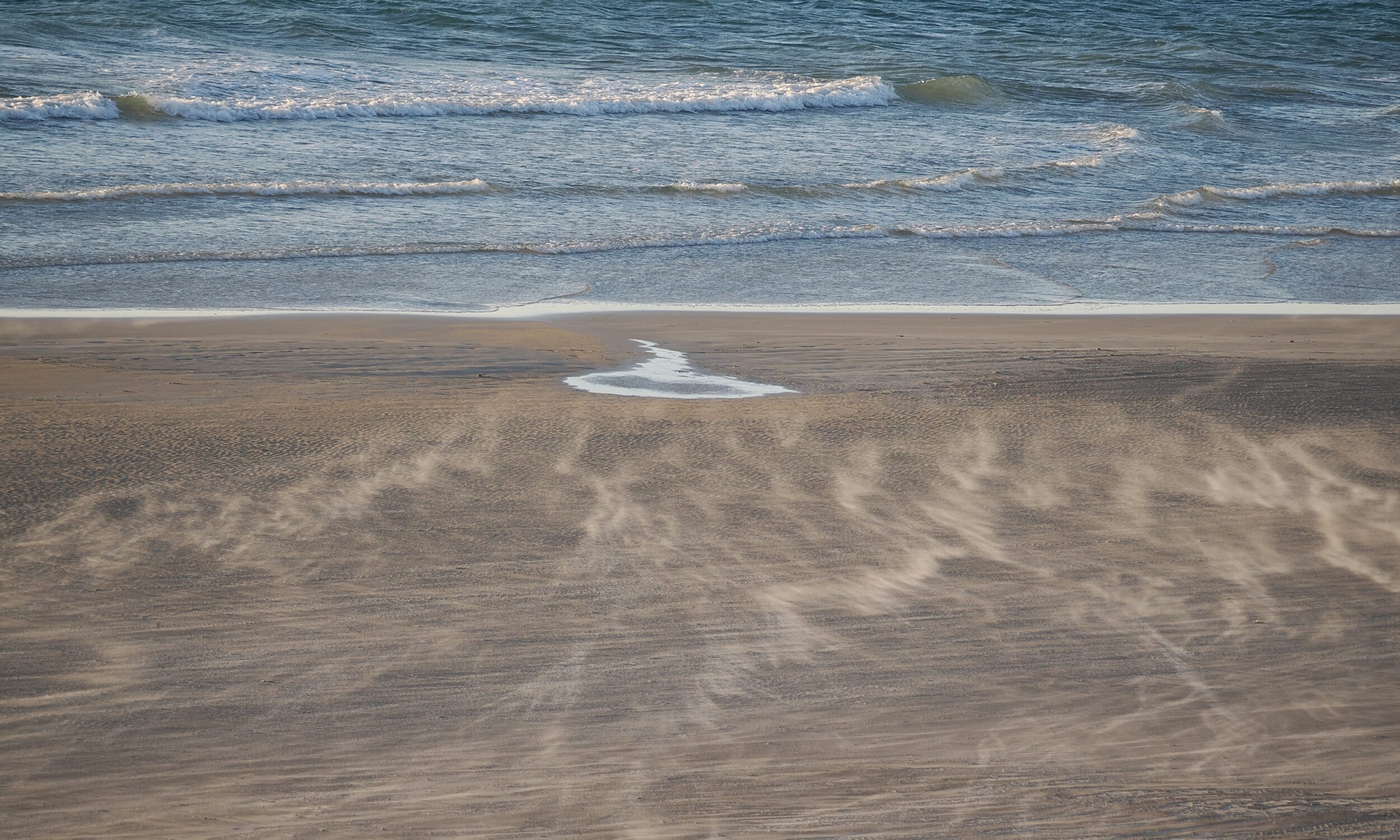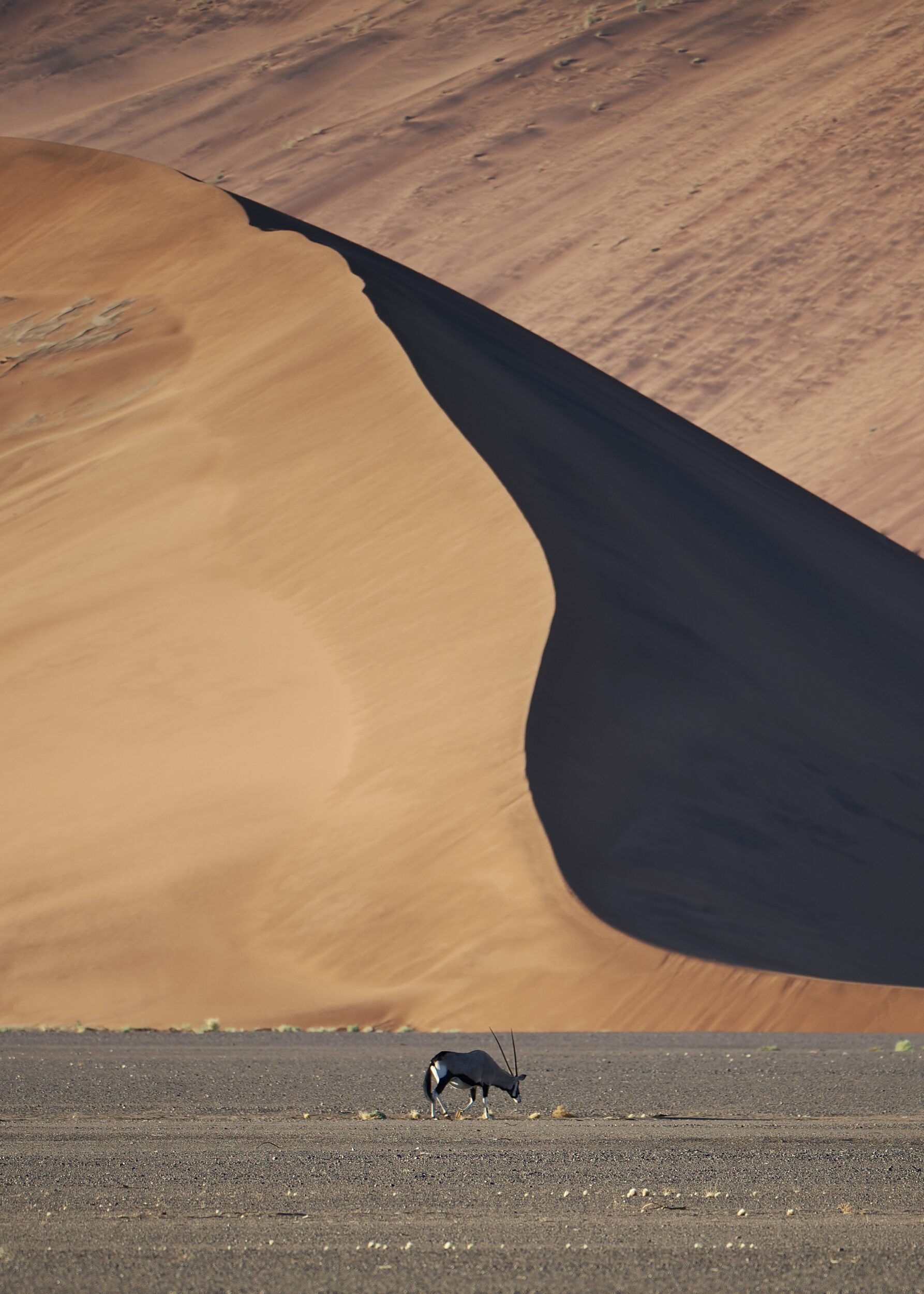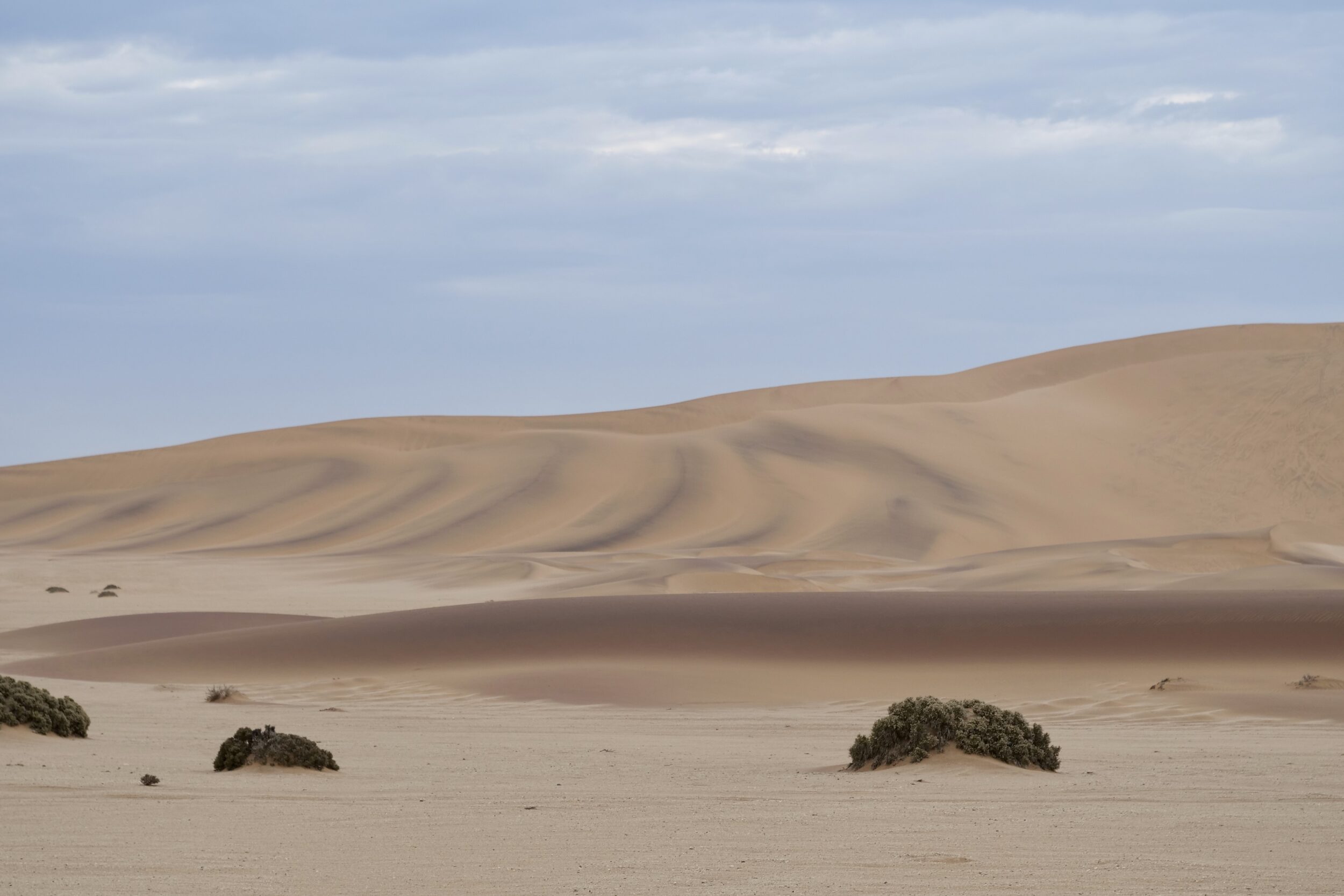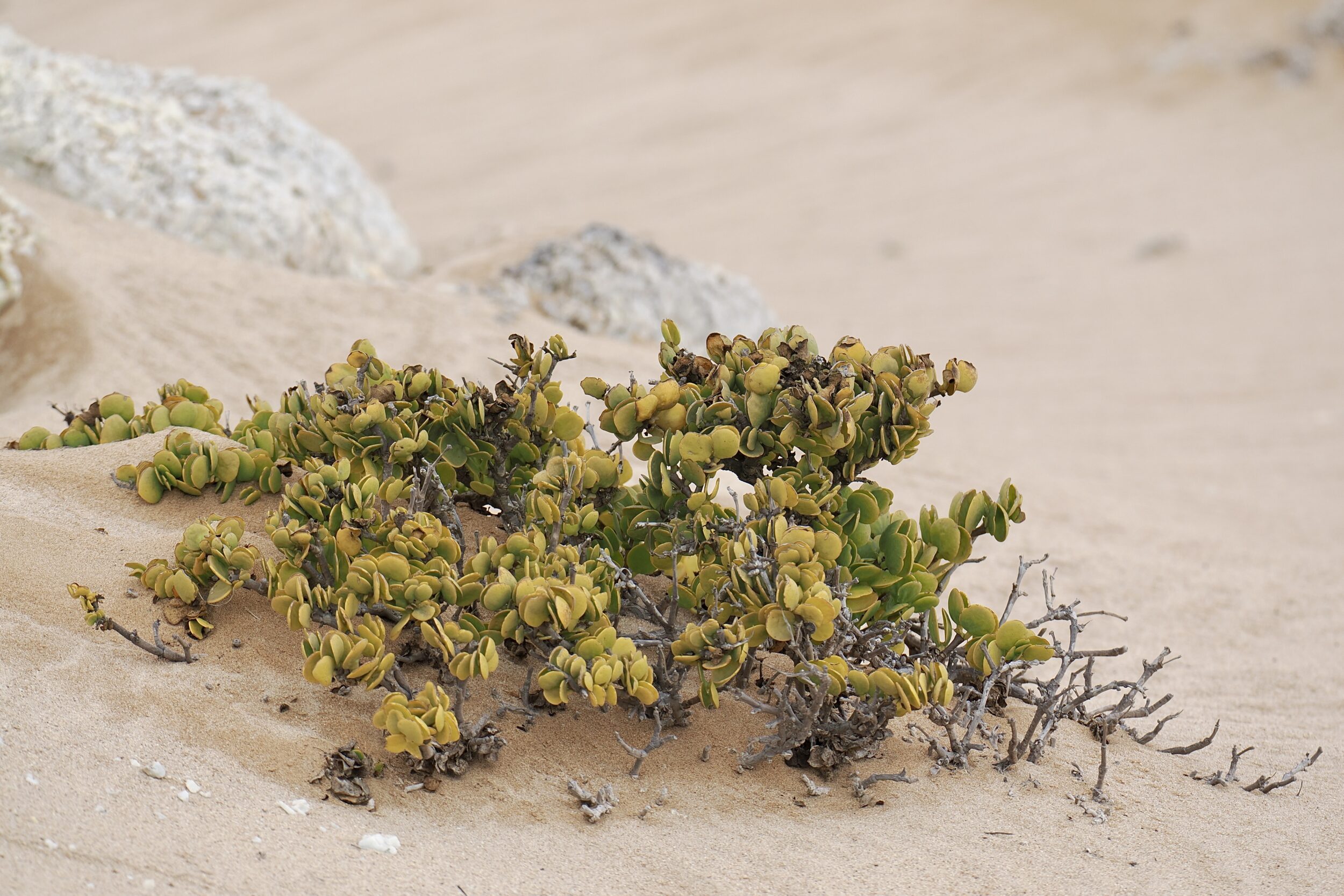Yes, the beach really is that white, and the ocean shallows’ shades of blue are also “true”.
(the various blues’ intensity is in large part thanks to the sand’s whiteness, acting in concert with the sun, high in a clear sky)
The featured image looks down (and east, over Yokinup Bay, to Mt Arid) from Belinup Hill in Cape Arid National Park; visible, “naked” sand occupies a small portion of the photo, but millions of tons of “hidden” sand are invisibly-present through most of its field of view.
Southern WA has some of the world’s poorest soils, but what grows in and “hides” those very sands is (arguably) “our” planet’s greatest natural wildflower “show”.
Comments closed